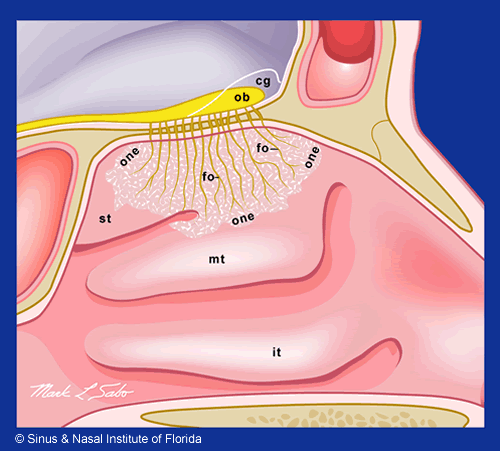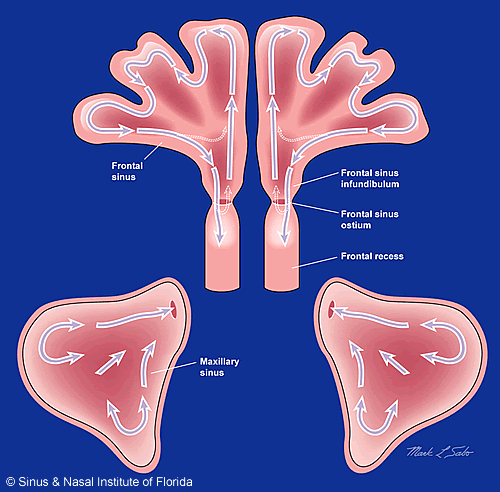

The nasal passages with all their elements (Turbinates & Sinuses) function in concert to improve our breathing as compared to breathing through our mouths. This is because they:

In addition to their mucus producing function, the paranasal sinuses appear to serve additional benefit: They are thought to help us by:
“The Mucociliary Blanket”
Each of the turbinates and sinuses are also covered by mucosa (see Nasal & Sinus Anatomy). The mucosa of the nasal passages and sinuses produces between ½ quart and up to 1 ½ quarts of mucus /day. It is drained from the sinuses by tiny hair-like structures called cilia that beat the mucus out of the sinuses into the nasal passages and down into our throat where is usually imperceptibly swallowed. This “mucociliary blanket” serves to filter our air of tiny particles which can contain infection and other irritants which are then digested by acid in our stomach. The mucus contains defensive proteins that help protect us from invasion by organisms. Additionally the moisture of the “mucus blanket” helps humidify the air that we breathe. This “mucus blanket” becomes noticeable when there is a lot of it (thin and watery) or when it becomes thick and dry. This is typically referred to as post-nasal drip.
In addition to the mucus producing role of the mucosa, it is rich with blood vessels and nerve endings that serve many purposes that include our sense of smell and “sneeze reflex”.
